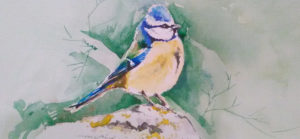Breeding performance of Blue tits Cyanistes caeruleus can be predicted from time since last logging in Mediterranean mixed oak forest
Balestrieri R., Basile M., Romano S., Ferraro S,, Izzo M., Posillico M., Matteucci G.
Abstract:
Logging can affect breeding performance and offspring survival in birds, but such effect can change over time. We investigated this question, deploying nest boxes for blue tits (Cyanistes caeruleus) in four forest stands, differing in the time since the last harvesting event occurred: 2, 10, 20 and 45 years ago. We recorded laying date, clutch and brood size and number of fledglings in the four stands over two years (2014-2015). We modelled reproductive success as a function of laying date and number of offspring. In the first year, the first laying date was about ten days earlier in the older stands, while in the second year the laying date did not differ among stands. Clutch size differed between stands in the first year but in the second year. Brood size dropped in 2015, except in one of the oldest stands. Reproductive success changed markedly between years and stands and was determined mainly by laying date. Though our results should be considered preliminary, we acknowledge that such year-to-year variability is likely attributed to climatic and structural differences between years and stands, respectively.
